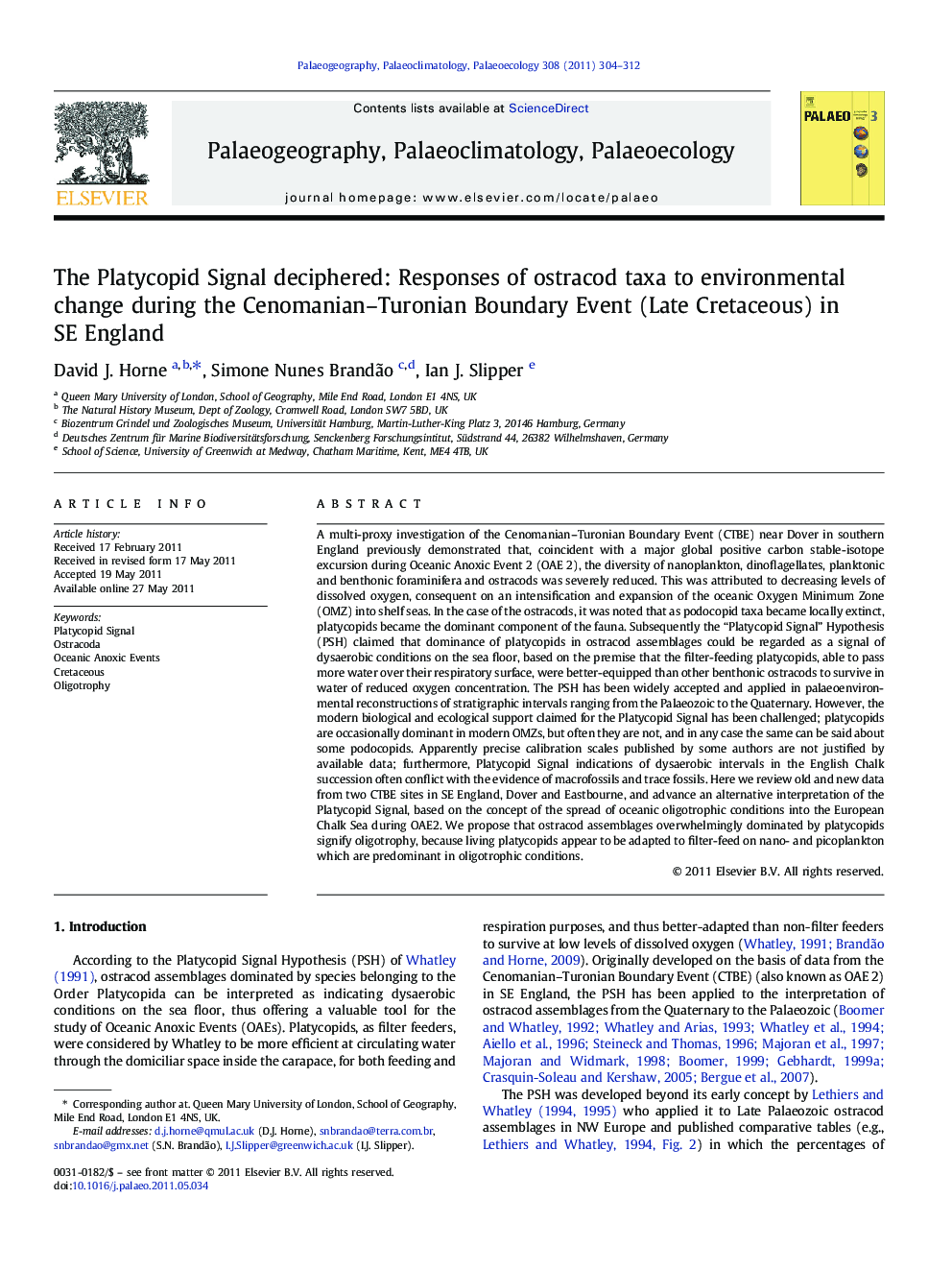| کد مقاله | کد نشریه | سال انتشار | مقاله انگلیسی | نسخه تمام متن |
|---|---|---|---|---|
| 4467126 | 1622251 | 2011 | 9 صفحه PDF | دانلود رایگان |

A multi-proxy investigation of the Cenomanian–Turonian Boundary Event (CTBE) near Dover in southern England previously demonstrated that, coincident with a major global positive carbon stable-isotope excursion during Oceanic Anoxic Event 2 (OAE 2), the diversity of nanoplankton, dinoflagellates, planktonic and benthonic foraminifera and ostracods was severely reduced. This was attributed to decreasing levels of dissolved oxygen, consequent on an intensification and expansion of the oceanic Oxygen Minimum Zone (OMZ) into shelf seas. In the case of the ostracods, it was noted that as podocopid taxa became locally extinct, platycopids became the dominant component of the fauna. Subsequently the “Platycopid Signal” Hypothesis (PSH) claimed that dominance of platycopids in ostracod assemblages could be regarded as a signal of dysaerobic conditions on the sea floor, based on the premise that the filter-feeding platycopids, able to pass more water over their respiratory surface, were better-equipped than other benthonic ostracods to survive in water of reduced oxygen concentration. The PSH has been widely accepted and applied in palaeoenvironmental reconstructions of stratigraphic intervals ranging from the Palaeozoic to the Quaternary. However, the modern biological and ecological support claimed for the Platycopid Signal has been challenged; platycopids are occasionally dominant in modern OMZs, but often they are not, and in any case the same can be said about some podocopids. Apparently precise calibration scales published by some authors are not justified by available data; furthermore, Platycopid Signal indications of dysaerobic intervals in the English Chalk succession often conflict with the evidence of macrofossils and trace fossils. Here we review old and new data from two CTBE sites in SE England, Dover and Eastbourne, and advance an alternative interpretation of the Platycopid Signal, based on the concept of the spread of oceanic oligotrophic conditions into the European Chalk Sea during OAE2. We propose that ostracod assemblages overwhelmingly dominated by platycopids signify oligotrophy, because living platycopids appear to be adapted to filter-feed on nano- and picoplankton which are predominant in oligotrophic conditions.
Research highlights
► We challenge the Platycopid Signal method of estimating oxygenation of marine waters.
► We focus on the mid-Cretaceous Cenomanian–Turonian Boundary Event.
► Ostracod-based indications of dysaerobia disagree with other proxy evidence.
► We offer a new explanation for the Platycopid Signal as indicative of oligotrophy.
Journal: Palaeogeography, Palaeoclimatology, Palaeoecology - Volume 308, Issues 3–4, 1 August 2011, Pages 304–312